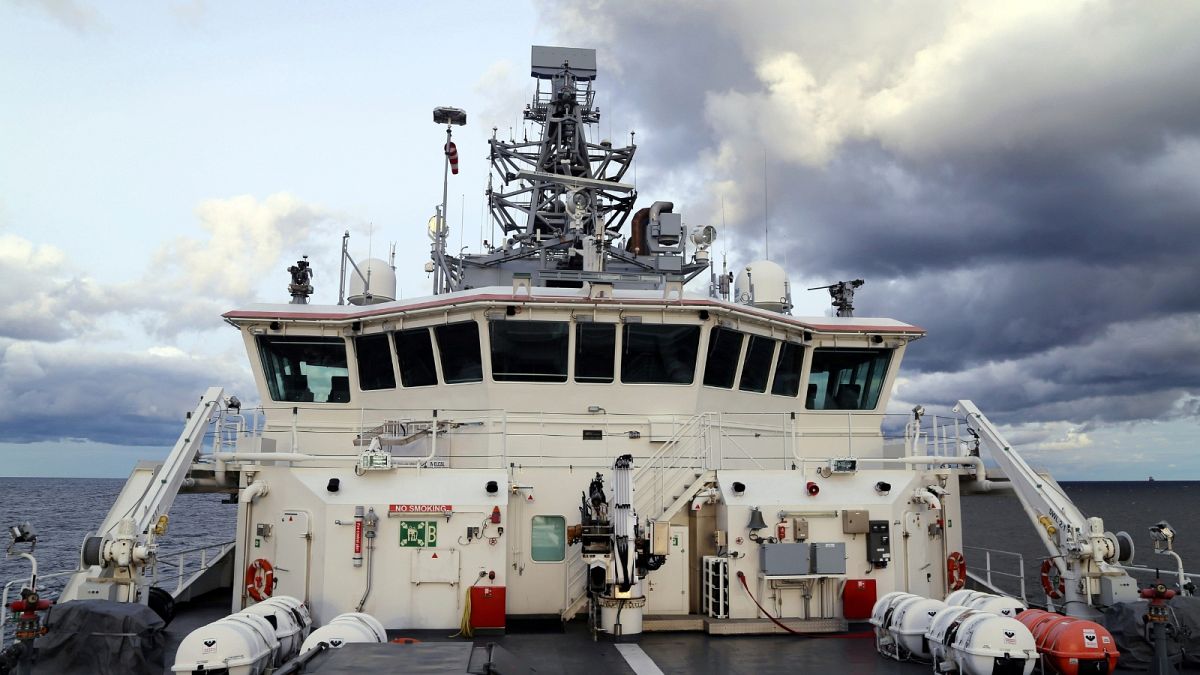The latest incident might have happened at the same time as a cable linking Finland to Estonia was also damaged, an incident being investigated as sabotage.
Sweden says an undersea telecommunications cable that runs under the Baltic Sea to Estonia has been partially damaged - and authorities believe it happened at the same time as damage to an undersea pipeline linking Finland to Estonia.
Finland launched an investigation into possible sabotage after reporting the damage to its gas pipeline to Estonia last week.
Swedish Civil Defense Minister Carl-Oskar Bohlin said Tuesday that the damage to the cable between Sweden and Estonia appeared to have happened at the same time, but that it's unclear what caused it.
“It is not a total cable break. There is a partial damage on this cable," Bohlin said. “We cannot assess what caused the damage."
Estonia's economy ministry said the disruption to the Swedish-owned cable was on Estonian territory, about 50 kilometres off the island of Hiiumaa in northern Estonia, the Baltic News Service reported. Service was restored within a few days, the agency said.
Swedish Defense Minister Pål Jonson said that his country's police, military and coast guard were in contact with their Estonian counterparts regarding the matter. He said there also was heightened vigilance in the Baltic Sea.
“We see the issue of security for our critical infrastructure as a high priority, and take the current situation seriously,” Jonson said at a news conference. He didn't suggest who or what may have caused the damage.
Finnish and Estonian authorities launched an investigation after the Baltic Connector gas pipeline was seriously damaged on 8 October.
The Connector carries a gas pipeline and telecommunications cable between the Baltic Sea neighbours, who are also both members of the European Union and NATO.
While initial suspicion fell upon Russia as a likely state actor involved in any sabotage, Estonian media has since looked at Chinese vessels operating in the Baltic Sea at the same time to see whether their passage close to either the pipeline to Finland, or the pipeline to Sweden, coincided with any malfunctions.
Later Tuesday, Estonian Defense Minister Hanno Pevkur said that the exact reason for the failure of the cable between Sweden and Estonia still needs to be clarified.
“The scale of this failure was quite small and, as the operators also said, the failure was corrected," Pevkur told Estonian media outlets, adding that there was no threat from a defense point of view.
"It needs to be clarified what exactly was the nature of the failure and whether it is also related to the Estonian-Finnish (telecommunications) cable and (gas) pipeline failure.”
On Friday, Swedish Prime Minister Ulf Kristersson spoke of a ”spaghetti of cables, wires” on the Baltic seabed which “is absolutely fundamental for data traffic.”
“We live in a time where civilian infrastructure is also very threatened in this security environment," Kristersson said. "It is also a very clear lesson from Ukraine, ie, attacking infrastructure that is for energy supply, food supply, water supply.”
The incidents come just over a year after the Nord Stream gas pipelines running between Germany and Russia in the Baltic Sea were damaged by explosions believed to be sabotage. The case remains unsolved.
A total of four leaks were discovered on Nord Stream 1 and 2 on Sept. 26 and 27, respectively. Two of the leaks were in the Swedish economic zone northeast of the Danish island of Bornholm, and two in the Danish economic zone southeast of Bornholm, and were outside national waters. Both Swedish and Danish seismic measurements showed that explosions took place a few hours before the leaks were discovered.
The blasts were deemed an act of sabotage by Sweden and Denmark.
